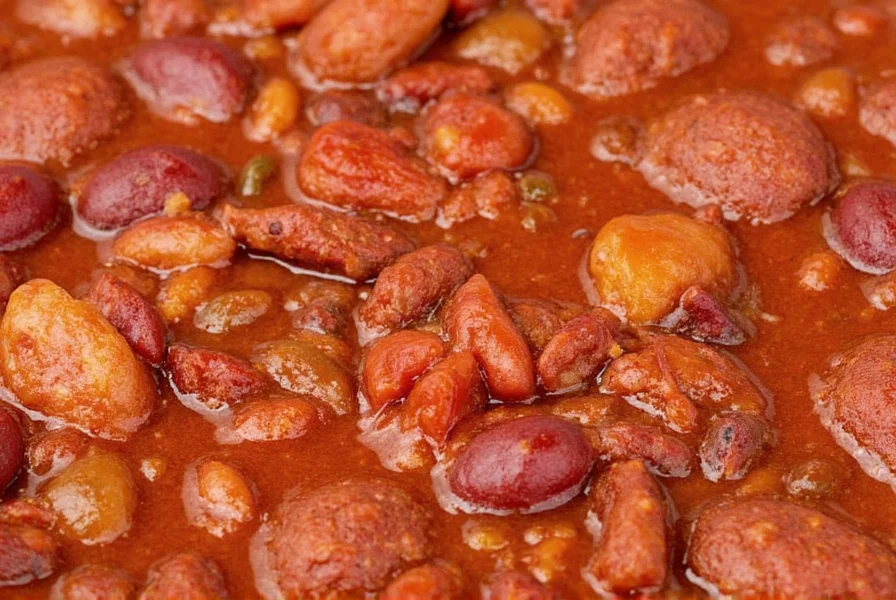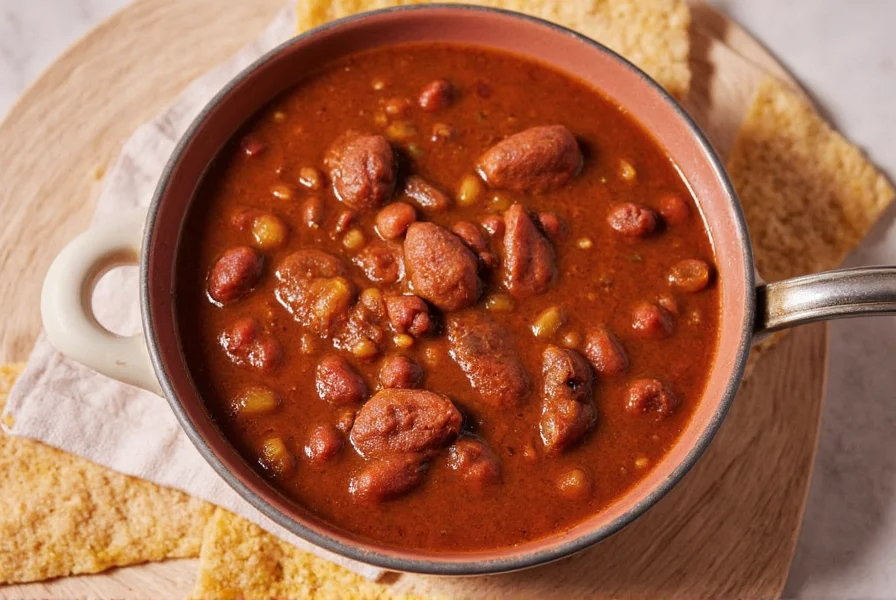Table of Contents
Introduction
The most essential spices to season chili with are cumin, chili powder, paprika, oregano, garlic powder, onion powder, and salt. These form the foundation of any great chili recipe. Whether you're a beginner or experienced cook, this guide provides direct answers to "what to season chili with" with specific spice recommendations, usage tips, and expert advice for perfect flavor balance.

Essential Spices for Chili
Here are the 7 must-have spices for seasoning chili, with exact usage guidelines:
- Cumin: 1-2 teaspoons per pound of meat. Adds warm, earthy depth. Toast whole seeds before grinding for maximum flavor.
- Chili Powder: 1-3 teaspoons per pound. Use a blend of ground chilies, cumin, and garlic for authentic flavor. Adjust based on heat preference.
- Smoked Paprika: 1 teaspoon per pound. Provides rich smokiness without heat. Regular paprika works but lacks depth.
- Oregano: 1 teaspoon dried or 1 tablespoon fresh. Adds herbal complexity. Use Mexican oregano for authentic taste.
- Garlic Powder: 1 teaspoon per pound. More consistent than fresh garlic. Avoid onion powder if using fresh garlic.
- Onion Powder: 1 teaspoon per pound. Enhances savory notes without texture issues.
- Sea Salt: Start with 1 teaspoon per pound. Adjust after cooking—salt enhances all other flavors.

Practical Tips for Seasoning Chili
- Layer spices properly: Add cumin, garlic powder, and onion powder early when browning meat. Stir in chili powder and paprika after adding tomatoes to prevent burning.
- Control heat precisely: For mild chili, use 1 tsp chili powder per pound. For medium heat, add 1/2 tsp cayenne. For extra heat, include 1 diced jalapeño with seeds.
- Balance with acid: Add 1 tbsp apple cider vinegar or lime juice at the end. This brightens flavors without diluting richness.
- Umami boosters: Stir in 1 tbsp soy sauce or 2 tsp tomato paste during the last 10 minutes of cooking for depth.
- Resting is key: Refrigerate chili overnight. Reheat and add fresh herbs (cilantro) and extra acid before serving for vibrant flavor.

| Product | Features | Advantages | Target Audience | Suitable Occasions |
|---|---|---|---|---|
| McCormick Cumin | Ground cumin with strong earthy aroma | Consistent quality, affordable | Home cooks, beginners | Weeknight meals, family dinners |
| Smoked Paprika from La Tienda | Spanish-style, rich smokiness | Authentic flavor, no added fillers | Food enthusiasts, grill masters | Barbecues, holiday feasts |
| Cayenne Pepper by Old El Paso | Pure ground cayenne peppers | Precise heat control, no added salt | Spice lovers, competitive cooks | Customizing heat levels, chili competitions |
| Ancho Chili Powder by Penzeys | Dried ancho chilies, fruity notes | Complex flavor, no artificial additives | Advanced home chefs | Special occasions, gourmet cooking |
| Garlic Powder by Lawry's | Fine texture, no clumping | Consistent flavor, easy to measure | Busy cooks, meal preppers | Quick meals, everyday cooking |
Frequently Asked Questions
What are the most essential spices for authentic chili flavor?
Cumin and chili powder form the core foundation. Smoked paprika adds depth, while oregano provides earthy complexity. Salt is critical—start with 1 teaspoon per pound of meat and adjust after cooking. Never skip these five spices for authentic flavor.
How can I reduce spiciness without losing flavor?
Add dairy (sour cream or cheese) when serving, or incorporate sweet elements like roasted sweet potatoes during cooking. A splash of citrus (lime or orange juice) balances heat while maintaining vibrancy. Avoid water—it dilutes flavor. For immediate fixes, stir in 1 tbsp tomato paste to absorb excess heat.
Can I substitute fresh spices for dried ones?
Yes, but use triple the amount for fresh herbs (e.g., 1 tbsp fresh oregano = 1 tsp dried). Add fresh garlic or cilantro in the last 10 minutes to preserve brightness. Note: fresh chilies provide different heat profiles than dried powders—jalapeños offer grassy notes while dried ancho chilies bring raisin-like sweetness.
Why does my chili taste flat even with spices?
This usually indicates missing acid or umami. Fix it with 1-2 tbsp apple cider vinegar or 1 tsp soy sauce stirred in during the last 15 minutes. A pinch of sugar (1/4 tsp) rounds flavors. Always taste after resting—flavors develop significantly overnight.
How far ahead can I season chili for best results?
For optimal flavor development, add 75% of spices during cooking, then refrigerate overnight. Reheat the next day and add remaining spices plus fresh acid (vinegar/lime) and herbs. The 24-hour rest allows spices to fully integrate while preventing "cooked-out" flavors.











 浙公网安备
33010002000092号
浙公网安备
33010002000092号 浙B2-20120091-4
浙B2-20120091-4